Ames Morison
Co-Founder, Medlock Ames Winery |

August 26, 2022 | Medlock Ames
|
This week we kicked off our 25th harvest at Bell Mountain Vineyard, bringing in a few tons of Pinot Noir and Chardonnay grapes for our sparkling wine. As I looked around at our team raising their glasses to toast the harvest, I’m reminded that what has always made Medlock Ames such a special place has been the people who work here. People are really the core of what we do and who we are and it’s with that in mind that I want to share the last two of our sustainability pillars with you.
These pillars might be the most meaningful to me. Creating an inclusive work environment and deepening community engagement touch on the core values that Chris and I have held from the moment the spark flew to begin what is now Medlock Ames. Over the years, we’ve strived to be leaders in how we care for our people but as part of our vision for the next two decades, we feel more can be done to show that no matter the size of your business, you can always find ways to show your team how much they are valued.
|
|
|
PILLAR 5: NURTURING AN INCLUSIVE WORK ENVIRONMENT
Sustainability is often spoken about in terms of the natural environment but there are other environments such as the one at work where sustainability is critical. This is about creating an ecosystem among people that promotes integrity, respect, intellectual curiosity, and long-term career success. It is with this in mind we created Pillar 5.
Our goal from the start has been to create a place where people feel supported and encouraged in their work. This is one of our highest values as a company and it drives our decision-making. We create inclusivity in a variety of ways, some of which are spelled out here in detail:
- Visibility into criteria for success and career advancement
- Mid-year and annual reviews are ingrained in our culture and mandated for all employees
- Career advancement and training plans are created and reviewed annually
- Job descriptions in English and Spanish for all positions
- Prioritize education across all disciplines
- Our entire winemaking and hospitality teams are earning their Level 2 Award in Wines certification through the Wine & Spirits Education Trust
- We’re working to have our vineyard team certified through Level 1 in Spanish in the next year
- Supporting new parents with 8 weeks of fully paid maternity leave for new mothers with up to 8 additional weeks of leave
- This is one of the most generous leave policies for new mothers we’ve seen in the wine industry
- As a winery run by a woman and with several members of our team raising young families, it was important that new parents are given the time and financial support to bond with their new child
- Monthly staff trainings to cross-pollinate ideas and ensure transparency
- Recent trainings have included a vine pruning clinic, a 20-year vertical tasting to see how our Cabernet has evolved and illustrates bottle aging, as well as implicit bias and sexual harassment training for all team members
|
|
|
PILLAR 6: DEEPEN ENGAGEMENT WITH COMMUNITY
Our deep commitment to people who are part of our success extends beyond our team. Pillar 6 is focused on creating sustainability by looking outward into our community and how we can support efforts to create a stronger world around us.
Our goal is to share our values with you and our community, demonstrating that making a difference is important and can be done at all levels. Here is how we are achieving this:
- Partner with organizations that share the same farming values and proactively work to reverse climate change
- Garden to alleviate hunger in the community
- We’ve partnered with gleaners in the past several years to donate over 1,000 pounds of fresh produce from our garden to local food banks each year
- This year we’ve begun partnering with Healdsburg-based Farm to Pantry charity to glean from our garden. This incredible organization run by Duskie Estes has gleaned over 200,000 pounds of produce this year alone. Learn More at farmtopantry.org.
- All-staff volunteer day each year that supports one of our community partners (last year we built trails for school groups Pepperwood Preserve)
- Active members in COPE, a micro-neighborhood community organization for fire prevention
- Actively participate in Sonoma County Wine Auction that benefits hundreds of community-based organizations
|
|
|
I feel so proud reading this list and yet feel so much more can still be done. Our people are our lifeblood and our community is the bedrock that supports us. Much of what I’ve shared above is not visible to you. However, I hope our deep values and care for our people come through in the way you experience Medlock Ames, in the people you meet here, and in the love you can taste in each bottle of wine you open.
I’m eternally grateful for you being a part of our community and for your continued support. Without you, our efforts cannot go on. I hope you’ve learned a little bit more about who we are and what we stand for in reading all 6 of our Sustainability Pillars over the past several months. I always welcome your feedback, either in person or by email, and hope to hear from you soon.
|
|
|
Warm regards,

Ames Morison
Co-Founder, Medlock Ames Winery
|
|

June 29, 2022 | Medlock Ames
|
June is one of my favorite times of the year when spring turns to summer and we enjoy the longest days of the year. Those extra minutes of sunshine are what help our grapes develop their flavors. June is always when we gather among the vines for our annual Dinner in the Vineyard which we just held, celebrating our 20th anniversary. This event is one of the most magical nights of the year, but this year was a bit of a surprise as we had a freak and brief rainstorm as we sat down to eat. While we had some covering, those who attended snuggled close together while rain dripped on the table, with everyone bonding while the wine flowed.
In my 25 years at Bell Mountain, I don’t think it’s ever rained in June, and I was thrilled for the extra water to fill our ponds and give our dry soil one last drink of water. We don’t expect to see rain again until November. This strange rain event was a reminder that while long summer days bring on joy and relaxation, there is always a lingering worry in my mind about our annual fire season and how precious the water we do have at Bell Mountain is to us.
Water and fire go hand in hand in my mind and are critical to our operations which is why we’ve dedicated two of our six Pillars of Sustainability to addressing these challenges. In April we talked about our goals of eliminating our carbon footprint and enhancing the biodiversity of our farm. Now we want to share our goals surrounding fire and water.
|
|
|
PILLAR 3: REDUCING OUR WATER DEPENDENCY
We have abundant water resources here at Bell Mountain. Our ranch comprises a large watershed that allows us to fill our five ponds with the first few rains. We have a plentiful aquifer that feeds three wells. But this water supply is not infinite, and we want to ensure that it remains for generations especially as we are in a historic 1,000-year drought which we seem to feel most deeply in the past few years. This year we’ve only had 85% of our average rainfall. Last year we only had a third of our average. And in 2020 we had half. This compounding shortage is alarming.
We’ve set a lofty goal of reducing our dependency on the estimated eight million gallons of water we use for our farming and winemaking operations by 40% annually. These are BIG numbers, but we are all in to ensure our wells don’t run dry and our ponds remain full to encourage the diverse ecosystem they support. How are we going to cut down on so much water usage, you ask? Well let’s break down where the water is being used as knowing that makes the solution clearer:
- Irrigating our vines to ensure that water gets to those roots, especially during the hot summer growing season continues to drain our ponds. Installing data-driven water monitoring for vineyard irrigation will allow us to make each drop of water count. We will get the right amount of water to each vine and cut our water usage by 10%.
- Frost protection through overhead sprinklers is one of our biggest usages of water, especially this year when we’ve had historically cold nights in May. We typically turn on our frost sprinklers twice per year. This year we’ve had to turn them on 10 times. By converting to wind-based frost protections which involves using massive fans in the vineyard to circulate the warmer air, we can save more than one million gallons of water a year. Side benefit: wind machines use a fraction of the energy of sprinkler systems.
- Lastly, the regenerative farming techniques that we are implementing allow our soil to hold on to more water. Every 1% increase in organic matter allows us to store an additional 25,000 gallons of water per acre in the soil, which greatly reduces our need to irrigate.
|
|
|
PILLAR 4: CREATING A FIRE RESILIENT ECOSYSTEM
Our most important responsibility as an organization is to keep our people safe. Our next most important responsibility is to protect the land and environment that supports us. Although fire is a natural part of our ecology, it poses a threat to our people and land, and after suffering the effects of the Kincade Fire in 2019, we feel the responsibility to protect our people and land even more acutely. We have identified several steps to make our ranch better adapted to fire if (or more likely when) it returns, and we are implementing these now:
- Remove burned trees that create hazards for humans and animals, making way for living trees to thrive.
- Conduct controlled burns to keep brush regrowth low and allow the wildflowers to rejuvenate.
- Bring back our beloved sheep and cattle to graze Bell Mountain and keep our weeds low.
- Drive greater communication on fire prevention with our neighbors through roundtable discussions and community support groups.
|
|
|
I recognize that water and fire aren’t the most glamorous parts of the wine experience, but each year, I’m reminded that these fundamental elements need to be cared for and managed carefully so we can ensure the sustainability of Bell Mountain Vineyards for decades to come. So, let’s all raise a glass to a safe summer and bountiful harvest.
|
|
|
Warm regards,

Ames Morison
Co-Founder, Medlock Ames Winery
|
|

April 21, 2022 | Medlock Ames
|
WORKING TOGETHER TO PRESERVE THE EARTH
|
|
|
Each year when Earth Day approaches I reflect back on what it means to celebrate mother earth. I think about the earth, air, water, people, and animals on a daily basis, and have for most of my life. It’s this deep thought about what more I can do individually, what we as Medlock Ames can do as a winery and what our entire community can do as a whole to preserve the earth that led us to create the Six Pillars of Sustainability Plan. We’ve touched on the Six Pillars before but I want to take this time of year to share a bit about what we are doing and how it impacts you.
|
|
|
PILLAR 1: ELIMINATING OUR CARBON FOOTPRINT
This seems like an obvious choice but the reality is we have 340 acres at Bell Mountain, with only about 60 used for vineyards and our operations. The rest is untouched. A sea of wild oaks, firs, manzanitas, and native grasslands covers most of the property, providing a much-needed Carbon Dioxide sponge, pulling toxins out of the atmosphere. Yet, when the Kincade fire burned through the property in 2019, we lost so many trees, reducing the capacity of our land to pull Carbon Dioxide from the sky. This weighs heavily on me. So I think a lot about how we can have an immediate impact.
To eliminate our CO2 footprint at Bell Mountain we’ve focused on:
- Increasing the output of our seven solar arrays through updated technology to maximize our usage of solar energy
- Replacing fossil fuel burning vineyard equipment and trucks with electric vehicles which can be powered by our solar panels
- Refreshing our winery operations to increase energy efficiency, reducing our overall energy needs
- Planting back 1,000 trees to replace many of those lost in the fire
|
|
|
PILLAR 2: ENHANCING BIODIVERSITY FOR GREATER LAND PRODUCTIVITY
Having grown up with animals, I’m keenly aware of the interdependent circle of life that exists between humans, animals, and the land. I’ve always loved the way animals factor into all we contemplate at Bell Mountain. From the wildlife corridor that shepherds deer carefully away from the vines towards Pepperwood Preserve to the grazing cattle we are bringing back as part of our fire prevention strategy, we are always looking at ways animals can increasingly be a part of what we do. Yet, I still feel there is more to be done. So to that end, we are taking new steps to incorporate animals more into our operations to naturally increase the productivity of our vineyard.
Some of these initiatives include:
- Adding more insectary flower beds to terraces of vines that were pulled out after the fires to encourage a greater diversity of insect species that help us to control pests
- Installing significantly more owl and bluebird boxes to increase the safe habitat for these natural predators that keep voles and gophers out of the vineyards
- Planting a wider array of cover crops that grow between the vines to feed the diversity of microorganisms that make up our soil
|
|
|
I spend a lot of time walking the vines, checking on the gardens, and inspecting how Bell Mountain evolves each year, and am always thinking of new ways we can do more. In addition to my sharing ideas with you, I’d love you to share with me your ideas of what else we can do.
All of this wandering and contemplating is what led me to create the Immersive Sound Experience to share more about what we are doing at Bell Mountain. By partnering with sound artist, Hugh Livingston, we’ve created a year of sounds that bring Bell Mountain to life. I encourage you to visit us and experience this auditory artwork for yourself. As always, I look forward to seeing you at Bell Mountain soon.
|
|
|
Warm regards,

Ames Morison
Co-Founder, Medlock Ames Winery
|
|

February 24, 2022 | Medlock Ames
|
In my 20s, I found myself in Guatemala, finishing my two year service in the Peace Corps, helping farmers make their land more productive. I witnessed people desperate to provide for their families use extremely harmful chemicals to eke out a living. These chemicals were harming not only the health of the land but more importantly, the health and wellbeing of the people who lived on the land. Those images and the impression they left, burned into my mind and my heart the desire to always care for the land, animals and mostly the people who depend on it.
When I came to Bell Mountain over 20 years ago, my vision was to care for the land and farm organically to preserve the soil and ecosystem that surrounded the vines. However, when the Kincade Fire tore through the property in 2019, it was a wake-up call for me that I needed to do more. New research about regenerative farming was more widely available and I could see that tools and techniques that were cutting edge a few decades ago were being replaced by pioneering ideas on how to preserve the earth and begin to dial back the effects of climate change. It was time to do more.
|
|
|
OUR NEW JOURNEY
We started by sitting down and thinking about all the elements that make up our farming and winemaking operations as well as caring for the 340 acres of mostly natural woodlands at Bell Mountain Ranch. The more we thought, discussed, and debated, the more it became clear that our roadmap for the next decade and beyond works on a small scale here but the principles apply to the world at large.
OUR ROADMAP TO THE NEXT DECADE
In our continued spirit of transparency, I’m sharing with you our Six Pillars of Sustainability. This is part of our ongoing effort to share with you how our views are changing but also to inspire others that making a big change can start with a small step. I’m sharing with you the condensed version with some key initiatives behind each pillar as we gather more data and test new strategies to remain on the forefront of this collective goal to preserve the air, land, water, people and animals on earth. This is close to my heart and ever evolving so I look forward to hearing your feedback as we embark on this journey.
|
|
|
PILLAR 1: ELIMINATE OUR CARBON FOOTPRINT
Our goal is to reduce our dependence on fossil fuels and become Carbon Neutral by 2026. Here is how we will achieve this:
- Replace our tractors and farm trucks from diesel and gasoline power to electric, which can be charged by our solar panels
- Partner with glass manufacturers and transportation providers to create glass bottles and delivery options that have the lowest carbon footprint from the time the sand is melted (which is one of the most CO2 intensive aspects) until it arrives at your house
- Convert our vineyard practices to Regenerative Organic farming to increase natural carbon capture through the soil
|
|
|
PILLAR 2: ENHANCE OUR BIODIVERSITY FOR GREATER LAND PRODUCTIVITY
Our goal is to boost biodiversity at Bell Mountain to reduce reliance on manufactured inputs to control weeds and pests. Here is how we will achieve this:
- Create attractive environment that attracts beneficial insects to help control insect pests including increasing species of cover crop by 100%, planting more insectary flowers, and plant 1,000 feet of native hedgerows
- Establish 30 barn owl boxes and kestrel houses by 2023 to control vineyard pests like moles and gophers that damage vine roots
- Restore woodland destroyed in Kincade Fire to support the 10 distinct plant communities at Bell Mountain by planting 1,000 trees by 2026 (these trees will also increase our overall carbon capture)
|
|
|
PILLAR 3: REDUCE WATER DEPENDENCY
Our goal is to reduce our dependency on the 8 million gallons of water by 40% annually. Here is how we will achieve this:
- Install data-driven water monitoring for vineyard irrigation to cut water usage by 10%
- Convert water-based frost protection to wind-based to save one million gallons of water a year
- Implement regenerative farming techniques that improve soil health and allow for more water capture in soil, reducing reliance on irrigation
|
|
|
PILLAR 4: CREATE A FIRE RESILIENT ECOSYSTEM
Our goal is to reduce fire risk to our people and ecosystem. Here is how we will achieve this:
- Remove burned trees and explore controlled burns to keep brush regrowth low
- Implement sheep and cattle grazing for weed management
- Drive greater communication and support across our neighborhood through roundtable discussions and community support groups
|
|
|
PILLAR 5: NURTURE AN INCLUSIVE WORK ENVIRONMENT
Our goal is to create a place where people work and thrive, wanting to be part of our team and feeling supported. Here is how we will achieve this:
- Career transparency, advancement and training plans created and reviewed annually
- Prioritize education across all disciplines including ESL for non-native English speakers and Wine & Spirits Education Trust wine education for all employees
- Job descriptions (in English and Spanish) for all positions with mid-year and annual reviews given to all employees
- Monthly all-staff trainings to cross pollinate ideas and ensure transparency including implicit bias and sexual harassment training for all team members
- 8 weeks of fully paid maternity leave for new mothers with up to 8 additional weeks of leave
|
|
|
PILLAR 6: DEEPEN ENGAGEMENT WITH COMMUNITY
Our goal is to share our values with you and our community, demonstrating that making a difference is important and can be done at all levels. Here is how we will achieve this:
- Partner with organizations that share the same farming values and proactively work to reverse climate change
- Garden to alleviate hunger in the community, partnering with Farm to Pantry charity to glean from our garden
- All-staff volunteer day each year that supports one of our community partners (last year we built trails for Pepperwood Preserve)
|
|
|
Please share your feedback and let’s keep the conversation going.
|
|
|
Warm regards,

Ames Morison
Co-Founder, Medlock Ames Winery
|
|

January 14, 2022 | Medlock Ames
|
This year marks the 20th anniversary of our first vintage of commercial wines at Medlock Ames!
It’s easy to reminisce about all the special moments of the past two decades but I seem to be spending most of my time thinking about the future.
|
|
|
HOW WILL BELL MOUNTAIN EVOLVE?
What varietals will thrive in the coming decades as the impacts of climate change alter the growing conditions?
WILL OUR CHILDREN LOVE CABERNET AS MUCH AS WE DO?
Will the wines we produce today still be the flavor of choice of the next generation?
|
|
|
I'VE BEEN PONDERING THE FUTURE FOR MANY YEARS NOW...
And in doing so, thought about what wines are most reflective of the spirit of Bell Mountain and what wines embody our vision of the future. These musings brought me to two very different places and two very different wines that I couldn’t be more excited to release to you this year.
|
|
|
WE ARE PROUD TO INTRODUCE THE FLAG.
A new Cabernet Sauvignon made from the select blocks and barrels that represent the pinnacle of wines Bell Mountain Vineyard produces. The Flag is named in honor of my great-great-grandfather, John Gilson Howell, who owned and published the Russian River Flag newspaper in Healdsburg in the 1860-1870s. This wine epitomizes the bedrock of the idealism and commitment for preserving Bell Mountain and the peak of wines this land produces for generations. To honor the wine and our history, each bottle is adorned with the reprint of the original publisher’s editorial on the first edition my great-great-grandfather printed on November 19, 1868. We only produced a small amount of this wine which will be sold in three-packs only and released later this year with first access to our Preservation Society Members beginning in March.
|
|
|
The second wine I’m very excited to release this year is...
OUR MÉTHODE TRADITIONNELLE SPARKLING WINE.
What better way to celebrate our 20th anniversary than with the first vintage of our estate-grown sparkling wine. After spending over two years aging on the lees, we will disgorge the wine this summer, just in time for our celebrations. We’ve only ever had a single acre of Pinot Noir that sits on the Russian River side of Bell Mountain Vineyard and the yields have been dwindling in the past several years with barely enough to bottle as Pinot Noir alone. So in the grand Champagne tradition, we combined our Pinot Noir with some of our delicious Sees clone Chardonnay to create a sparkling wine that is wonderful to enjoy with any meal or on its own.
|
|
|
I’m exceptionally proud of these wines that help us continue to tell the story of Bell Mountain Vineyard, our history and what we hope will also be our legacy. I look forward to clinking glasses with you later this year to enjoy these newest additions to the Medlock Ames family of wines.
|
|
| I’d love to talk to you more if you have any questions or thoughts on our new wines or responsible farming. Please email me directly at ames@medlockames.com. |
|
|
Cheers,

Ames Morison
Co-Founder, Medlock Ames Winery
|
|
|
THE ORIGINAL EDITORIAL OF THE RUSSIAN RIVER FLAG, PUBLISHED NOVEMBER 19, 1868
"This issue begins the existence of the Russian River Flag, which we propose to make a permanent institution. The growing interests of Healdsburg and vicinity call for it; our families look for it; our professionals need it; our business people require it, and the community at large demands a paper devoted especially to the interests of this region. To supply these wants and make of this a first class country publication will be our earnest endeavor. It shall be our aim to give, in each number of the Flag, a synopsis of the foreign and domestic news, and to keep our readers informed on current events generally and on local matters particularly. We shall give each week choice selections of entertaining and instructive miscellany and also carefully corrected tables of market reports. In short, we will try to make the Flag a necessity to the people of Sonoma county. While we may differ with many of our compatriots, and even with a majority of our friends in this county on questions of public policy, yet we propose to accord to every person the same conscientious impulses, and wish them to enjoy the fullest freedom of thought and speech that we claim for ourself. In business relations we shall know no one's politics, but when political questions arise we will be and abide with that party of progress whose motto is: “Excelsior,’’ and on whose banner appear the inscriptions, “Universal Liberty"—“Equality of all people before the law", “Restoration of political privilege” to all who hereafter will in good faith support the Government and obey the laws”—“Donation of public land to the pioneer"—“Protection to naturalized citizens,” and “Vindication of American honor in the face of all nations”. In the hope that our number may meet with a kind reaction, followed by generous patronage from an intelligent public, we set it forth with a promise to do better as the paper advances in age." JOHN G. HOWELL, EDITOR
|
|

December 13, 2021 | Medlock Ames*|MC_PREVIEW_TEXT|*
|
ADAPTING TO OUR NEW CLIMATE
|
|
|
Hello and Happy Holidays! In this time of reflection, I want to share some of the changes we have made at Bell Mountain Vineyard to make it more resilient to climate change.
WHY CHANGE? THIS IS OUR STORY...
When my best friend Chris James and I found Bell Mountain in 1997, we discovered abandoned Merlot vines and crumbling terraces. Through extensive soil testing and environmental studies, we discovered the grape that thrives best at this location is Cabernet Sauvignon followed by Bordeaux blenders and Sauvignon Blanc. Over the next several years, we embarked on a massive replanting project to put in a broad array of rootstock and clones for Cabernet Sauvignon along with more Merlot, Malbec, Cabernet Franc, and Petit Verdot as well as a touch of Syrah and Pinot Noir because I love those varieties. We also acquired the neighboring property which had been recently planted to Chardonnay and incorporated Sauvignon Blanc into the mix. In total, we had 9 varieties planted which gave us incredible flexibility in the winery to show what Bell Mountain was capable of.
|
|
|
OVER THE NEXT FEW DECADES...
I’ve witnessed how each of these varieties has evolved as the impacts of climate change take hold. We’ve had erratic rain and droughts combined with several years of extreme heat. The assumptions we made when the vineyards were first planted were no longer as relevant as the climate around those vines had changed dramatically. As we remained committed to our original goals of producing the best wine possible from Bell Mountain, we were evaluating what were the right vines and varieties to thrive for the next 20 years at Bell Mountain.
|
|
|
THEN ON THE NIGHT OF OCTOBER 27TH 2019...
the Kincade Fire swept through our ranch. When I arrived the following morning, everything surrounding me was charred black. It was devastating and utterly shocking. The fire was a pivotal moment for us. Suddenly it brought the impacts of climate change into sharp focus, and it has awakened in us a desire to be a part of the solution and to see our ranch in the broader context of our neighborhood, our watershed, and even our role in the global issue of reversing climate change.
Immediately after the fire, it appeared that less than 2,000 vines were touched by flames. However, over the following two years, we noticed that the damage to our vines was more extensive than we originally believed. We saw the leaves on entire blocks turn red from disease, exacerbated by the fire. While it was heartbreaking to me, we had to make the tough decision to pull up 20% of our vineyard. This makes what remains even more precious to us.
|
|
|
Of the blocks that were most impacted, our entire Petit Verdot and Syrah had to be removed. Even more heartbreaking to me was the need to pull out the old-vine Merlot that sat along the terraces which we painstakingly restored by hauling 50 tons of rocks 24 years ago.
|
|
|
WE NOW HAVE 45 BEARING ACRES...
of vineyard remaining with an additional 4 acres that have been replanted on drought-resistant rootstock as we look to put vines into the ground that have the greatest chance of surviving the changing climate at this site. We continue to evaluate our vines as there are a few more blocks that may survive but are not in the clear yet.
|
|
|
While it has been emotionally taxing to see the devastating impact of the fire on all our hard work over the years, it has also provided a sense of clarity and purpose that I never knew possible. Of the blocks that remain at Bell Mountain, I’m more convinced than ever that the dual impact of the cooling influence of the Pacific Ocean buffered against the Mayacamas coupled with California’s abundant sunshine is why Cabernet Sauvignon does so well as this site.
|
|
|
WE'VE GOTTEN LASER FOCUSED...
About what we do best. Going forward, we are going to stay focused on our Cabernet Sauvignon program, showing you how the soil and climate impact our 20 unique Cabernet blocks allowing us to craft gorgeous wines with their own personalities and expressions of our terroir. We are leaning into our Cabernet Sauvignon in a bigger way so will be sharing exciting news with you about our Cabs in the coming months.
|
|
| I’d love to talk to you more if you have any questions or thoughts on climate change or responsible farming. Please email me directly at ames@medlockames.com. |
|
|
Cheers,

Ames Morison
Co-Founder, Medlock Ames Winery
|
|

November 8, 2021 | Medlock Ames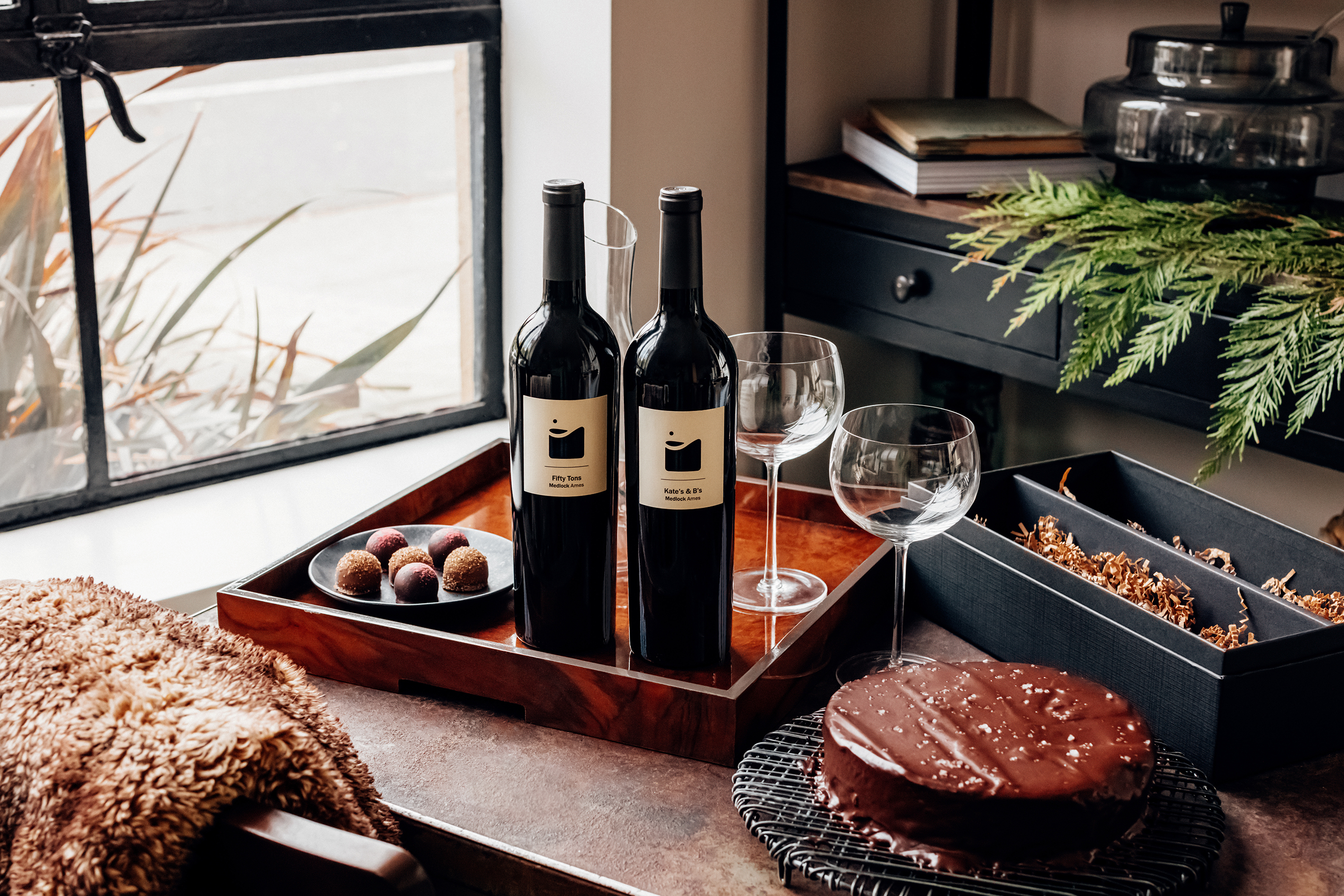
Photo by: Christiann Koepke
This season is a time to reflect on everything we are thankful for. Whether in person with family or toasting from afar, we hope Medlock Ames can bring Thanksgiving wine to your table and a little warmth to your holiday celebration. Set your own table or surprise a friend or family member to make their Thanksgiving brighter.
2018 Fifty Tons Cabernet Sauvignon

Named for its structure, the muscular Fifty Tons Cabernet Sauvignon is harvested from steep hillsides that consistently produce fruit with incredibly intense flavor. A member-exclusive wine, the 2018 Fifty Tons Cabernet offers aromas of blackberry and blueberry accompanied by a powerful palate. Deep berry flavors mix with fresh, juicy red fruit elements and a luxurious chocolate character, kept in check by silky tannins and integrated acidity.
This wine is simultaneously big, bold, balanced, and elegant, calling for a food pairing with an equally strong personality. With the traditional Thanksgiving meal, we enjoy this wine alongside roasted potatoes or brussels sprouts with bacon. The salty, fatty components bring complementary complexity to this stand-out wine.
2018 Heritage Merlot

Our 2018 Heritage Merlot is filled with bright mouthwatering acidity giving freshness that brings the palate to life with elegant characters of blueberry, black cherry, spiced plum, cocoa, and fresh herbs. A very structured mouthfeel offers an abundance of minerality and lushness making this a wine that can be enjoyed now but will also open over the years.
The fruit these vines produce has intense flavor and tannin. An ideal wine to enjoy on its own cozied up by the fire, this beautiful Bordeaux varietal is also indulgent paired with grilled meats and creamy cheeses.
2018 Estate Red

Your favorite red blend – 70% Cabernet Sauvignon, 19% Merlot, 6% Cabernet Franc, 4% Petit Verdot, and 1% Malbec – the Medlock Ames Estate Red is a unique mix that is delicious right out of the gate, vintage after vintage. This wine hits on all cylinders: flavor, color, texture, depth, finish, and overall impression. “The alchemy and artistry of blending is something that challenges and motivates us,” says Winemaker, Ames Morison, and that motivation is clearly expressed through this wine.
This is a bottle that loves spicy, salty, and fatty food components, and pairs well with many of your go-to Thanksgiving dishes, from the main course of turkey and stuffing through dessert and beyond. If you’re opting for to-go over go-to, enjoy this wine alongside takeout Italian dishes like fresh pasta tossed in a Bolognese sauce or filet mignon from your local steakhouse.
2018 Lower Slope Chardonnay
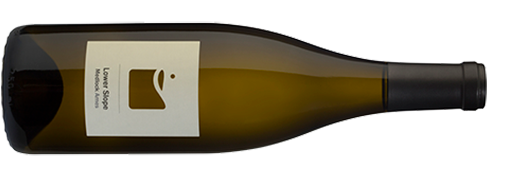
The 2018 Lower Slope Chardonnay brings us aromas of farm fresh sweet cream and pears with a touch of peach and hazelnuts. On the palate, the wine walks a fine line between the fresh acidity of the wine’s youth and the rich umami character born of aging sur lie. This comes through in a balanced combination of green apple freshness that evolves into a lengthy finish with lingering notes of apricot.
This wine is a match made in heaven for creamy soups and rich buttery green beans. The Lower Slope Chardonnay can also carry its way into dessert alongside pumpkin pie and apple crisps.
2020 Sauvignon Blanc

Our 2020 Sauvignon Blanc, planted at a higher elevation with ample sunshine, opens up with aromas of lemon curd, honeysuckle, white flowers, and grapefruit. Seeing brief skin contact to extract structural elements and intensify the character of our Sauvignon Blanc fruit, this wine's structured palate offers flavors of lemon zest, crisp granny smith apple, and guava that are rounded out with palate-cleansing acidity. Try it paired with creamy mashed potatoes and you’ll be sure to go back for seconds.
If cooking isn’t in the cards, this wine shines alongside the bright flavors of citrus-forward Mexican dishes and good company.
If you have of these wines or their past vintages in your cellar, we recommend pulling them out or chilling them down this season!
Cheers and Happy Holiday from the Medlock Ames family.

October 20, 2021 | Medlock Ames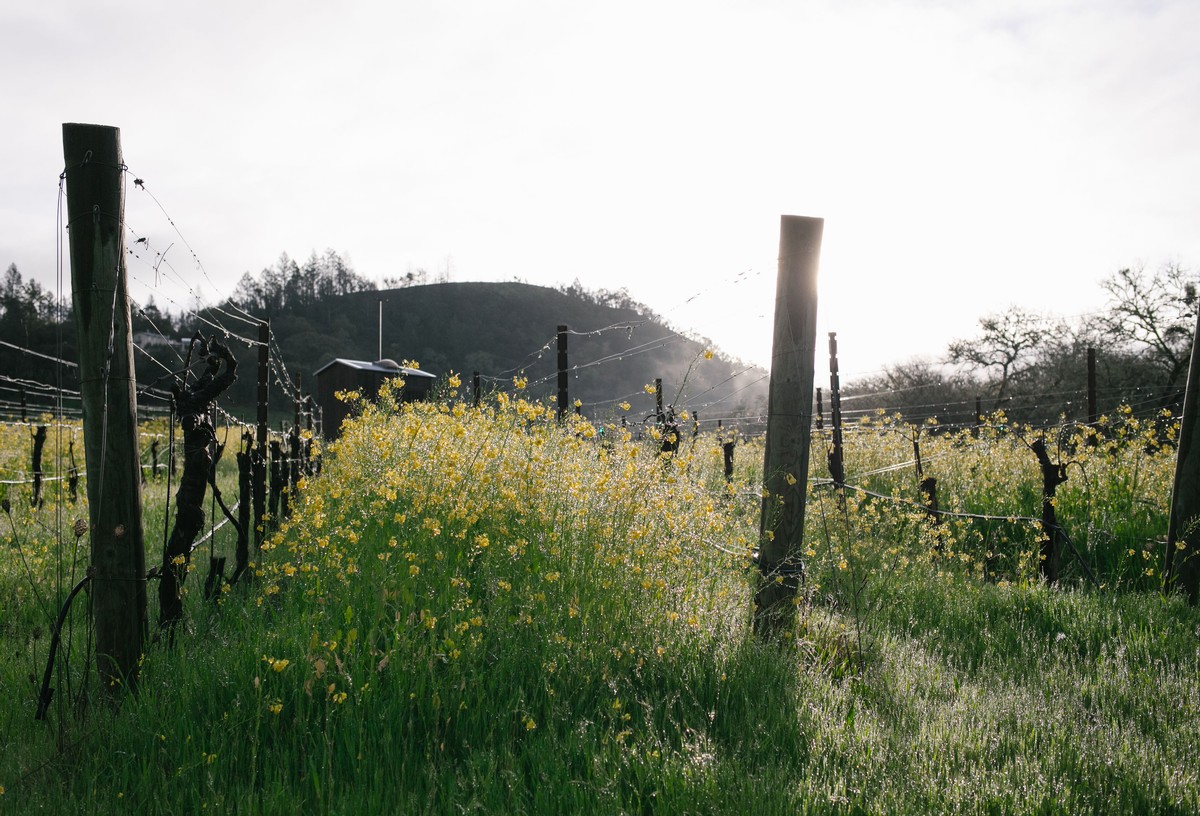
SOUL SEARCHING: WHAT'S NEXT AFTER TWO DECADES AT BELL MOUNTAIN
New Names. New Packaging. New Wines.
Hello again, friends!
In my last email I shared our vision for strengthening our long-term commitment to caring for our land and in doing so hopefully making the world a better place. We’ve received heartwarming feedback from you, and we are truly grateful. It inspires us to redouble our efforts. Over the months to come, we will share new sustainability initiatives that we are embarking on. We have lofty goals!
As we have spent the last year or so distilling our thoughts on sustainability, there have been other things we’ve been quietly working on behind the scenes to help our wines better tell our story. We’re excited to finally let you all in on the plans.
As always, we would love to talk to you about this more if you have any questions or thoughts on climate change or responsible farming. Please email me directly at ames@medlockames.com.
NEW NAMES
As we grow deeper roots at Bell Mountain, we want to incorporate the next generation into our wine stories. Select wines will have new names to better tell our story but still be made with the same great winemaking philosophy.
- The first one you will see is in the Fall Release with the 2020 Burning Daylight Sauvignon Blanc. Previously known as Newcomb, Burning Daylight honors the commitment to hard work that is core to Medlock Ames. “Burning daylight” was one of Chris James’ father’s stock expressions. We use it whenever there is a lot of work to be done and not a lot of time to do it.
- New names for some of our other wines will be released in future email updates.
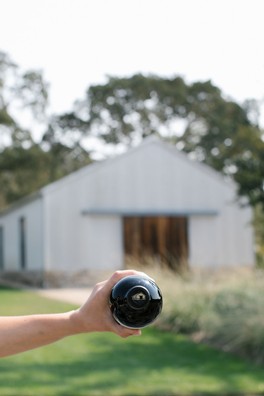 |
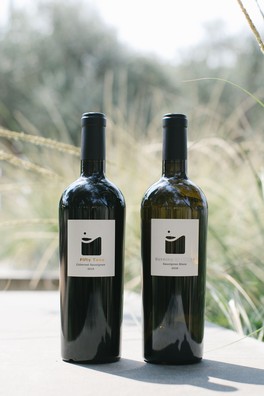 |
NEW PACKAGING
As much as we care about our land, we also care deeply about the quality of our wine. It has always been our goal for our wines to express the uniqueness that can only be found at Bell Mountain Vineyard, and now we want to make sure that it shows in each bottle of wine you see. Starting with the 2019 vintage of reds and the 2020 vintage of whites, all Medlock Ames wines will have the same look along with our iconic die-cut logo.
- Each label will state “Bell Mountain Vineyard”. Everything we produce comes from this one special vineyard and we want to make sure everyone sees it on our bottles.
- Each wine will include the varietal and vintage on the front label.
- Each vintage is the summation of the weather and all the hard work that goes into growing the fruit and making the wine. Each year is distinctive and we want that to show.
- We are bringing back the block cut image of our Barn on the top of the foil. Our barn is where it all began and this iconic barn adorned the capsule on the very first vintage we produced.
NEW WINES
Red varietals grown at Bell Mountain are so distinctive that we want to showcase the beauty, richness, and texture each one imparts.
- We’re moving away from our blends and focusing on our Cabernets along with streamlining to single varietals of the reds to better express the flavors and uniqueness each of these varietals express from Bell Mountain Vineyard.
- A sparkling wine that is a blend of our Pinot Noir and Chardonnay to allow us to celebrate our 20 years and beyond.
- A new flagship Cabernet (more to come soon).
- And we have to say goodbye to others. Given the damage the 2019 Kincade fire did to Bell Mountain, we’ve had to remove our Petit Verdot and Syrah. It breaks my heart that 2020 was the last vintage of our Bywater Syrah.
- With our laser focus on showcasing what each varietal can express at Bell Mountain, we are no longer producing Snakepit after 2017 or Estate Red after the 2018 vintages.
We want to continue to communicate with you, our customers, on this topic every one to two months. Be sure to check your inbox for updates.
Cheers,

Ames Morison
Co-Founder, Medlock Ames Winery
|
|

August 18, 2021 | Medlock Ames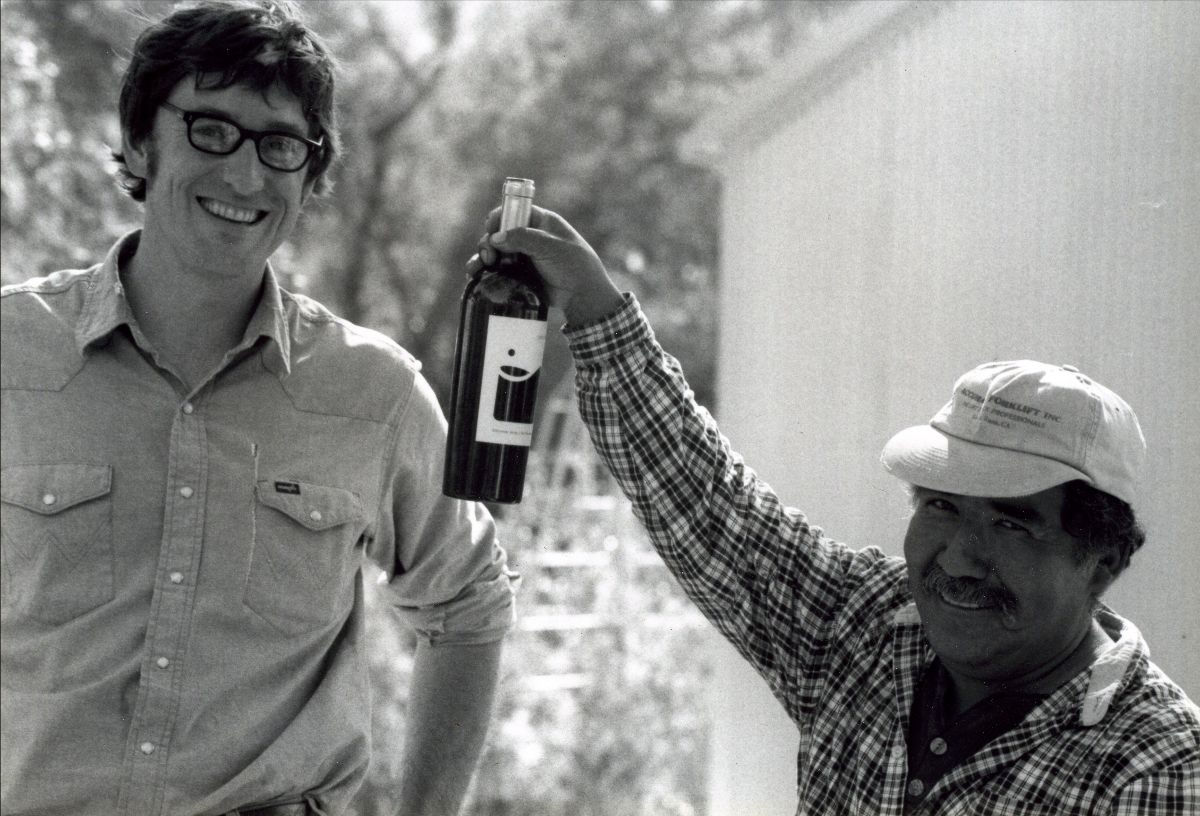
To our friends near and far,
As we look to the future and imagine the kind of place we want Medlock Ames to be, we look at it through a prism of our core founding principles. One of our most deeply held beliefs is that we must protect and preserve our land, to leave it better than when we found it. Commitment to that ideal has kept us focused over the years. Mostly it has evolved around organic farming. For a long time that seemed like enough. But as we learn more, we want to expand our definition of sustainable to encompass much more.
When we think about the future, we have a vision of the kind of company we want Medlock Ames to be. We see a beautiful, thriving, diverse ecosystem, with myriad plant and animal communities, wild and domesticated, teeming with fertility and abundance. We see a group of people working together supporting each other in their endeavors. These people feel challenged but enthusiastic in their work. They feel supported, respected, and understood. We see a company that is part of a greater community of neighbors that care about each other and look out for each other. We are further connected to our customers who we supply with food that nourishes the body and wine that nourishes the soul. And we also see our company as a microcosm of the world. What we want for our company is our hope for the whole Earth.
 |
 |
|
For many years we thought mostly in terms of taking good care of our farm and not really thinking about our place in the wider world. For us, that meant farming organically. Organic farming is important. But it is just one small aspect of what we do. It was our first step. But now, after caring for this land for 23 years we can see where we stand in a larger context, and we have thought long and hard about how we can realize our vision for the beautiful Bell Mountain Ranch. It takes a new kind of thinking, one that goes beyond doing no harm and towards taking concrete action to bring about our vision.
To further our mission, we are joining several organizations and seeking certification to double down on our commitment to improving our land and our community. The first, and the one we are most excited about is Regenerative Organic Certified. This is an add-on to our existing organic certification and goes a step further by certifying that we are committed to farmworker fairness and to proving that our farming practices are increasing the health of the soil and that we are actively removing Carbon from the atmosphere where it causes global warming, and putting it in the ground where it increases soil fertility.
For many years we’ve quietly gone about our business, but as we learn more about what we can do to improve our farming, we want to start being more vocal about it and sharing our experience with the world, taking a more active role in solving the climate crisis and farming responsibly.
We also want to communicate with you, our customers, on this topic every one to two months. Be sure to check your inbox for updates.
We would love to talk to you about this more if you have any questions or thoughts on climate change or responsible farming. Please email me directly at ames@medlockames.com
Cheers,

Ames Morison
Co-Founder, Medlock Ames Winery
|
Recent Posts
-
April 10, 2023
-
August 26, 2022
-
June 29, 2022
-
April 21, 2022
-
February 24, 2022
-
January 14, 2022
-
December 13, 2021
-
November 8, 2021
-
October 20, 2021
-
August 18, 2021
Blog Categories
Menu
|















































